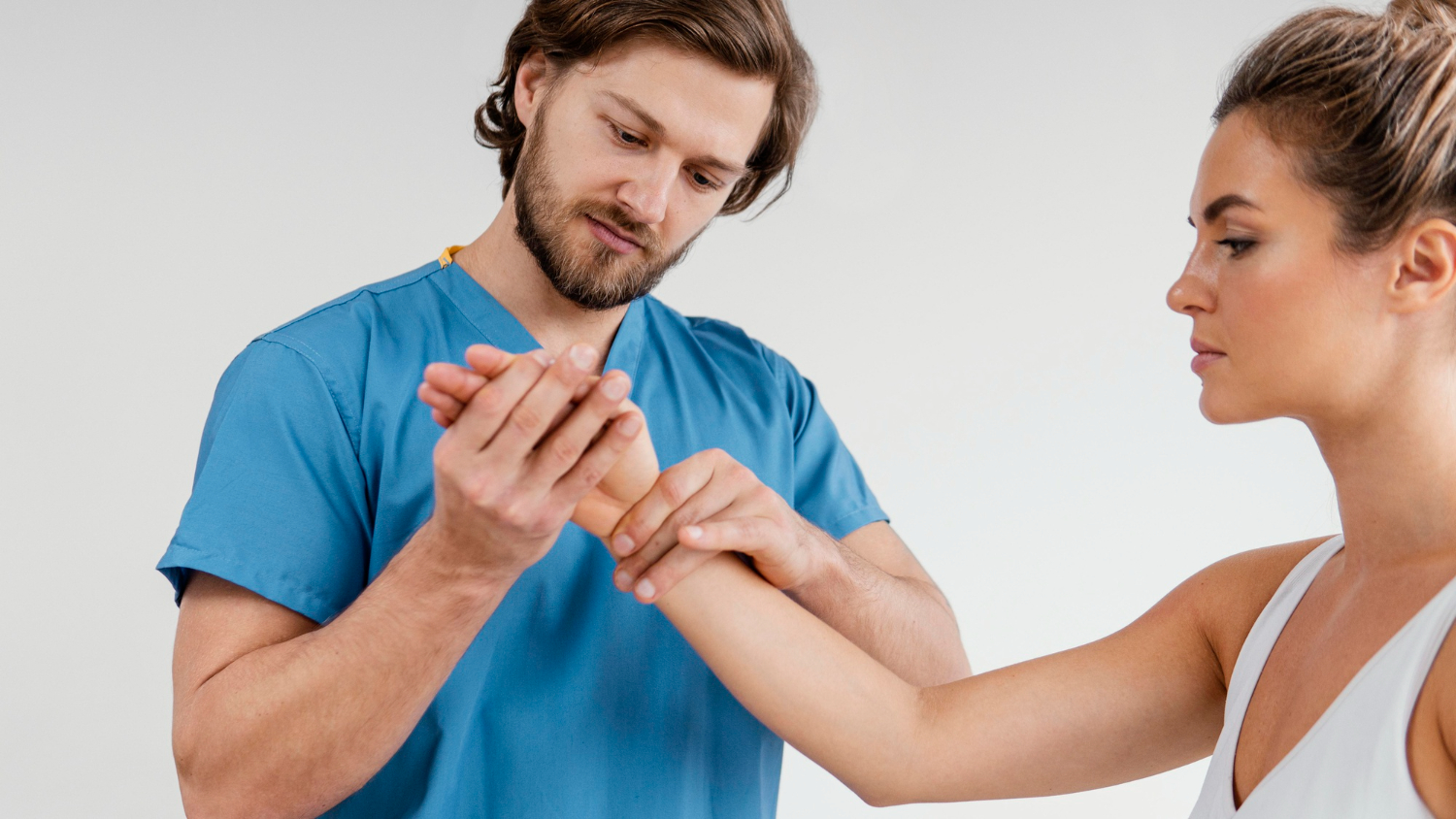Synopsis
Hand and finger pain can severely impact basic activities like writing, typing, cooking, or buttoning a shirt. Whether caused by arthritis, trauma, or repetitive stress, the right physiotherapy for finger pain and physio for trigger finger can dramatically improve hand function and reduce daily discomfort. This blog explores how finger physiotherapy after surgery, along with targeted physiotherapy for hands and fingers, supports joint recovery, strengthens mobility, and restores independence.
Physio for finger injury and arthritis relief includes joint mobilisation, tendon gliding exercises, and fine motor skill training. Techniques such as paraffin wax therapy, ultrasound, and resistance band exercises not only ease stiffness but also help in tissue regeneration and pain management. For post-operative cases or fractures, finger physio focuses on healing tendons, improving circulation, and preventing scar tissue adhesions.
This blog also explains the benefits of physiotherapy exercises for trigger finger, especially for individuals with diabetes or those experiencing repetitive gripping strain. Tailored regimens help in releasing the locked tendon, reducing inflammation, and avoiding surgical intervention.
With the right therapist and structured care, patients can experience remarkable recovery even after years of pain. Whether managing arthritis in hands or healing after a fracture, finger and hand physiotherapy opens the path to freedom of motion, renewed grip strength, and confidence in daily tasks.
Table of Contents
Introduction to Elbow Physiotherapy
- Understanding Finger and Hand Pain
- Benefits of Physiotherapy for Finger Injuries and Arthritis
- How Trigger Finger Develops and How Therapy Helps
- Role of Post-Surgical Finger Physiotherapy
- Effective Exercises for Finger Rehabilitation
- Holistic Healing with Hand and Finger Therapy
- Precautions and Home Care for Finger Health
- Expert Finger Physiotherapy at Orthocure Clinics
Understanding Finger and Hand Pain
The hand is a complex structure with 27 bones, numerous joints, tendons, and ligaments. Injuries, arthritis, nerve compression, and repetitive strain can all contribute to chronic finger pain. Physiotherapy for finger pain targets the source of dysfunction—whether inflammation, joint degeneration, or muscular imbalance.
Benefits of Physiotherapy for Finger Injuries and Arthritis
Physiotherapy for hands and fingers relieves stiffness, improves range of motion, and restores strength. It supports tissue healing and enhances joint lubrication. Unlike medication that only masks symptoms, physiotherapy addresses functional deficits. For arthritis, it slows down joint wear and enhances daily utility.
How Trigger Finger Develops and How Therapy Helps
Trigger finger is caused by inflammation of the tendon sheath, leading to locking or catching of the finger when bent. Physio for trigger finger includes stretching, splinting, and soft tissue release techniques. It reduces swelling, allows the tendon to glide freely, and often prevents the need for injections or surgery.
Role of Post-Surgical Finger Physiotherapy
After surgeries like tendon repair, fracture fixation, or joint reconstruction, finger physiotherapy after surgery is critical. It minimises scar tissue formation, maintains alignment, and restores mobility. Early mobilisation under professional guidance prevents long-term dysfunction and enables faster return to normal hand use.
Effective Exercises for Finger Rehabilitation
Physiotherapy exercises for trigger finger and other conditions include finger bends, tendon glides, isometric holds, and resistance pinch movements. Therapists may use putty, therapy balls, and grip trainers to improve dexterity and muscle endurance. These are progressed based on the healing phase and patient tolerance.
Holistic Healing with Hand and Finger Therapy
A comprehensive approach goes beyond exercises. Physio for finger injury often includes electrotherapy, moist heat therapy, and ergonomic advice. Therapists also train patients in safe grip techniques, joint protection strategies, and adaptive tools for day-to-day tasks.
Precautions and Home Care for Finger Health
Avoid repetitive gripping, extreme finger bending, or heavy lifting during recovery. Patients should regularly perform prescribed stretches and strengthening routines. Splinting during the night may also reduce inflammation and protect the tendon. Routine follow-ups ensure correct healing and therapy modification.
Expert Finger Physiotherapy at Orthocure Clinics
At Orthocure Clinics and Gyms, physiotherapy for finger pain is designed using global best practices and custom protocols. Our team of trained therapists tailors regimens for trigger finger, post-surgical recovery, and arthritis relief. With specialised diagnostic tools, structured rehab plans, and expert supervision, we deliver long-term results in hand rehabilitation. Whether it’s pain relief, functional improvement, or pre/post-surgical support, Orthocure stands out for its comprehensive, tech-enabled physiotherapy care.
FAQs
What is trigger finger and how is it treated with physiotherapy?
Trigger finger occurs when inflammation narrows the tendon sheath, causing the finger to lock in a bent position. Physiotherapy can reduce inflammation and restore motion through tendon gliding exercises, soft tissue release, and splinting. With consistent therapy, many cases resolve without surgery. It’s most effective when started early. Physiotherapists also guide on activity modifications to prevent recurrence.
Is physiotherapy effective after finger surgery?
Yes, finger physiotherapy after surgery is crucial for recovery. It helps prevent stiffness, improve mobility, and ensure proper tendon healing. Without it, scar tissue may limit motion and grip strength. Tailored exercises, stretching, and progressive strengthening ensure a return to pre-surgery function. Supervised sessions also minimise the risk of complications.
What are common causes of finger pain treated with physiotherapy?
Arthritis, fractures, trigger finger, tendonitis, and repetitive strain injuries are commonly treated. Physiotherapy reduces pain, restores movement, and strengthens hand muscles. It also helps with postural corrections and ergonomic training. Therapy addresses both the symptoms and root causes for lasting results. Early diagnosis and treatment enhance success rates.
How long does it take to recover with finger physiotherapy?
Recovery varies by condition. Mild cases may improve in 2–4 weeks, while post-surgical rehabilitation may take 8–12 weeks. Regular sessions and adherence to home exercises speed up recovery. Progress depends on patient commitment, severity of the issue, and general health. Follow-up care is essential for sustained improvement.
Can physiotherapy prevent arthritis progression in fingers?
Yes, physiotherapy plays a preventive role. It maintains joint mobility, improves grip strength, and delays cartilage degeneration. Exercises reduce stiffness, while manual therapy and ergonomic tools prevent overuse stress. Combined with lifestyle changes, therapy helps slow arthritis progression. Early intervention significantly improves hand functionality and comfort





